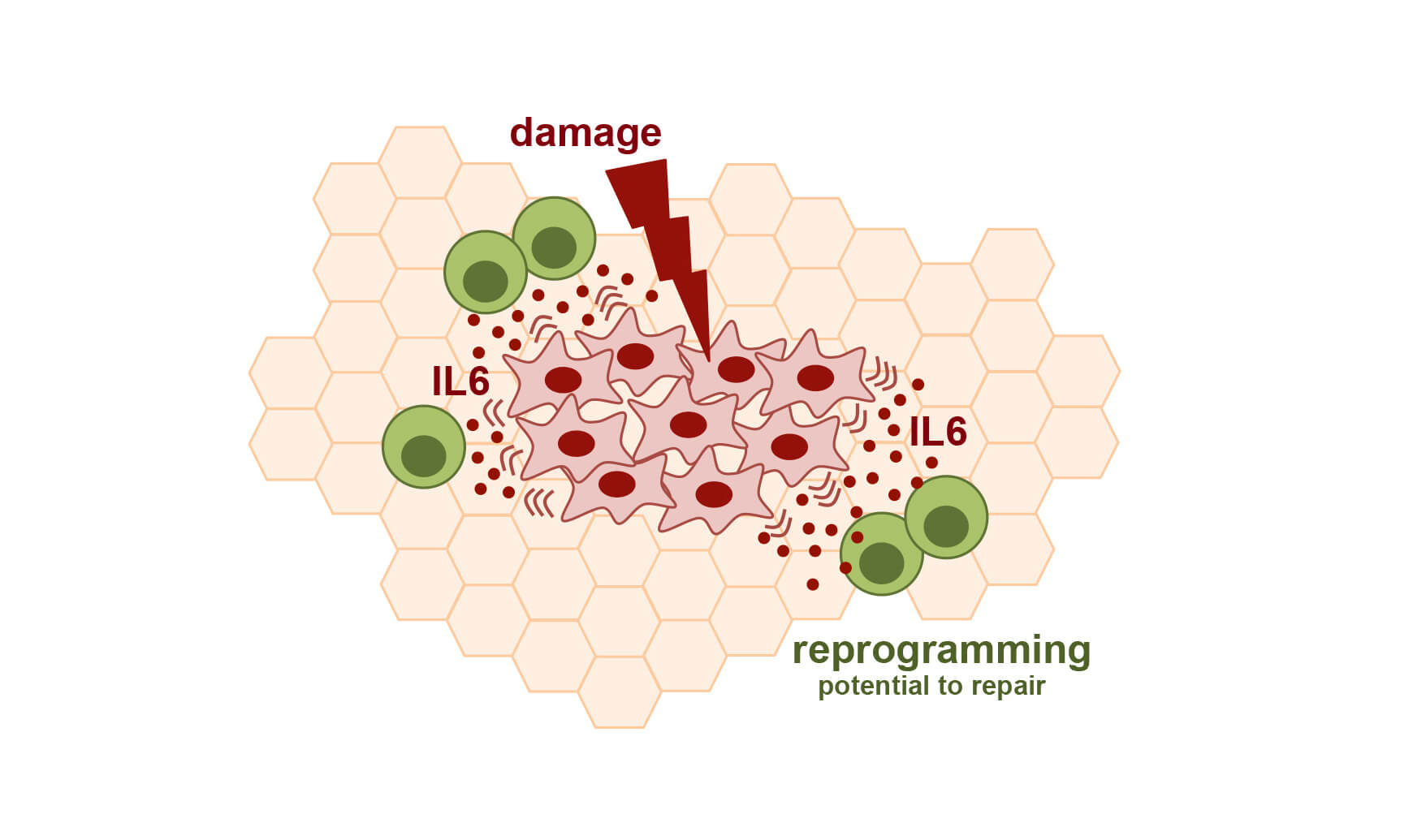



If you look into the face of cellular reprogramming, what you see depends on whether it occurs in a culture dish or a living organism. As you might expect, living tissue has more context. Here, tissue damage and senescence provide crucial signals that can help push somatic cells toward an embryonic state. Properly scrutinized, these signals could help scientists improve regenerative medicine and reverse some of the maladies related to disease and aging.

Cellular reprogramming earned its discoverer Shinya Yamanaka the Nobel Prize and opened the door to regenerative medicine. This technique, based on introducing a combination of four genes known as OSKM (for the initials of the genes, OCT4, SOX2, KLF4, and MYC), reverts adult cells to an embryonic-like state and transforms them into pluripotent cells. However, there are several limitations to this process, such as a very low efficiency and the emergence of tumors known as teratomas, which make cellular reprogramming incompatible with its potential clinical use.
Until 2013, cellular reprogramming was reported only in explanted cells, not in the cells of living organisms. Accordingly, the tissue context is relatively unfamiliar. But it has been examined in a recent study conducted by scientists based at the Centro Nacional de Investigaciones Oncológicas (CNIO), or the Spanish National Cancer Research Center.
A CNIO team led by Manuel Serrano has analyzed what happens in living tissues of mice when cellular reprogramming is induced using OSKM. What CNIO scientists have seen changes the idea that we had to date about this technique.
OSKM appears to trigger cell damage and cell senescence, a state in which cells stop dividing but do not die. The senescent cells secrete certain proteins, including an inflammatory cytokine called interleukin-6 (IL-6), that promote reprogramming of neighboring cells.
Details of this work appeared November 25 in the journal Science, in an article entitled, “Tissue Damage and Senescence Provide Critical Signals for Cellular Reprogramming In Vivo.” The article notes that OSKM reprogramming is inefficient both in vitro and in vivo and explains that cell-intrinsic barriers to OSKM reprogramming may operate differently in the culture and living contexts.
“The expression of OSKM in vivo triggers two different cellular outcomes: reprogramming in a small fraction of cells, and damage and senescence in many other cells,” wrote the authors of the Science paper. “There is a strong positive association between these two processes, due to the fact that cellular senescence creates a tissue context that favors OSKM-driven reprogramming in neighboring cells.”
The CNIO scientists emphasize that the positive effect of senescence on reprogramming is mediated by secreted factors, of which IL-6 is a key player. Without IL-6, the OSKM genes are far less efficient inducing the reprogramming process.
These findings suggest the following sequence of events: the expression of the OSKM genes damages cells, the damaged cells secrete IL-6, and the presence of this molecule induces the reprogramming of some neighboring cells.
Having identified the essential role of IL-6, the CNIO team is now working on various pharmacological approaches to enhance reprogramming efficiency and thereby improve the regeneration of damaged tissue, even in the absence of the Yamanaka genes. Improving the repairing capacity of tissues could have obvious implications for regenerative medicine, including the treatment of multiple pathologies and degenerative processes associated with aging.
 Relevant
news
Relevant
news